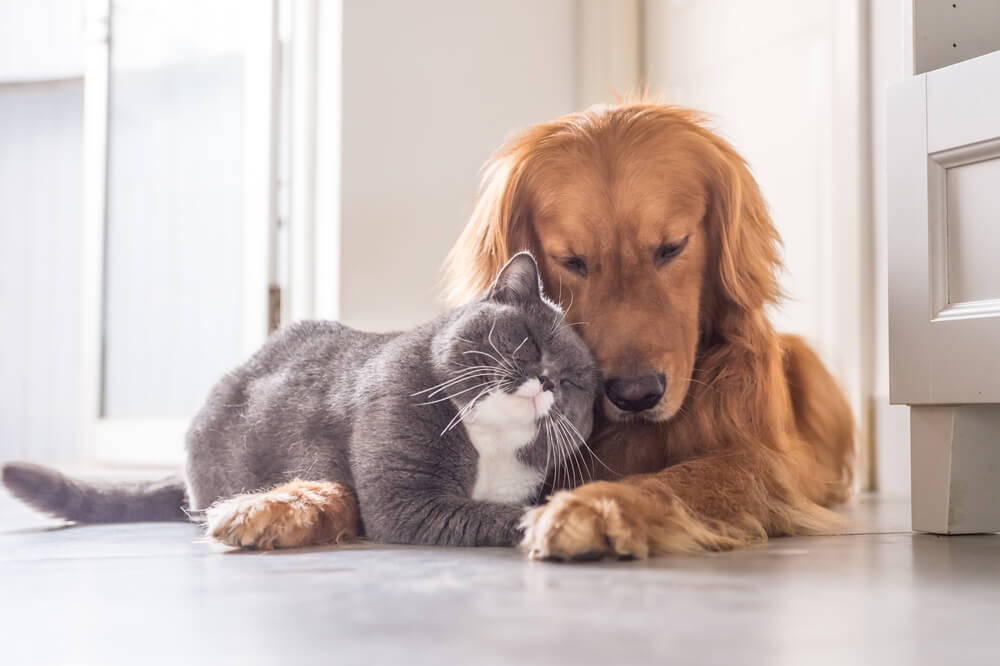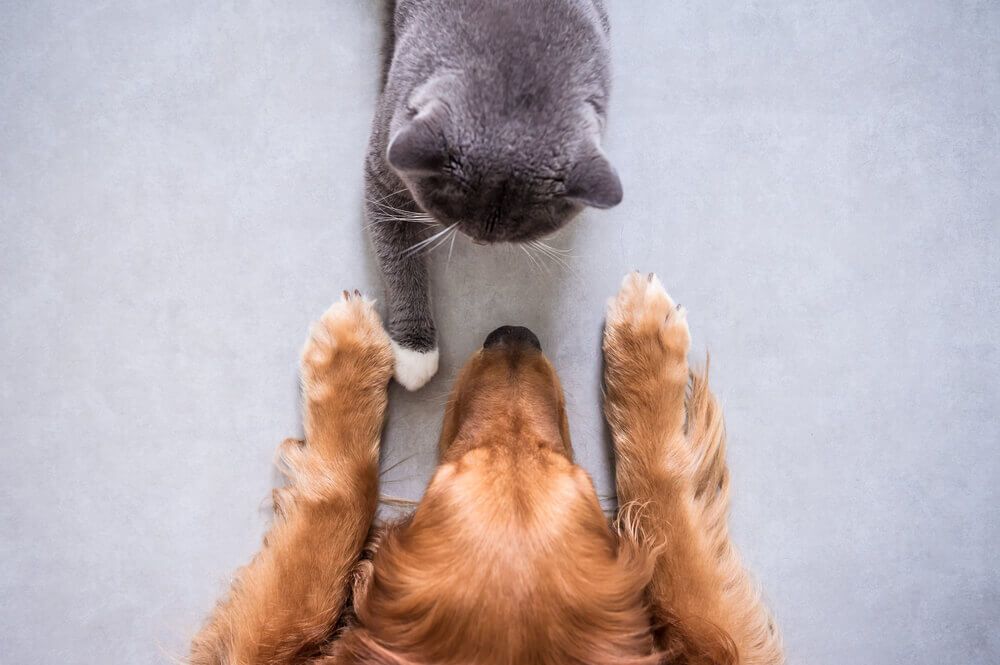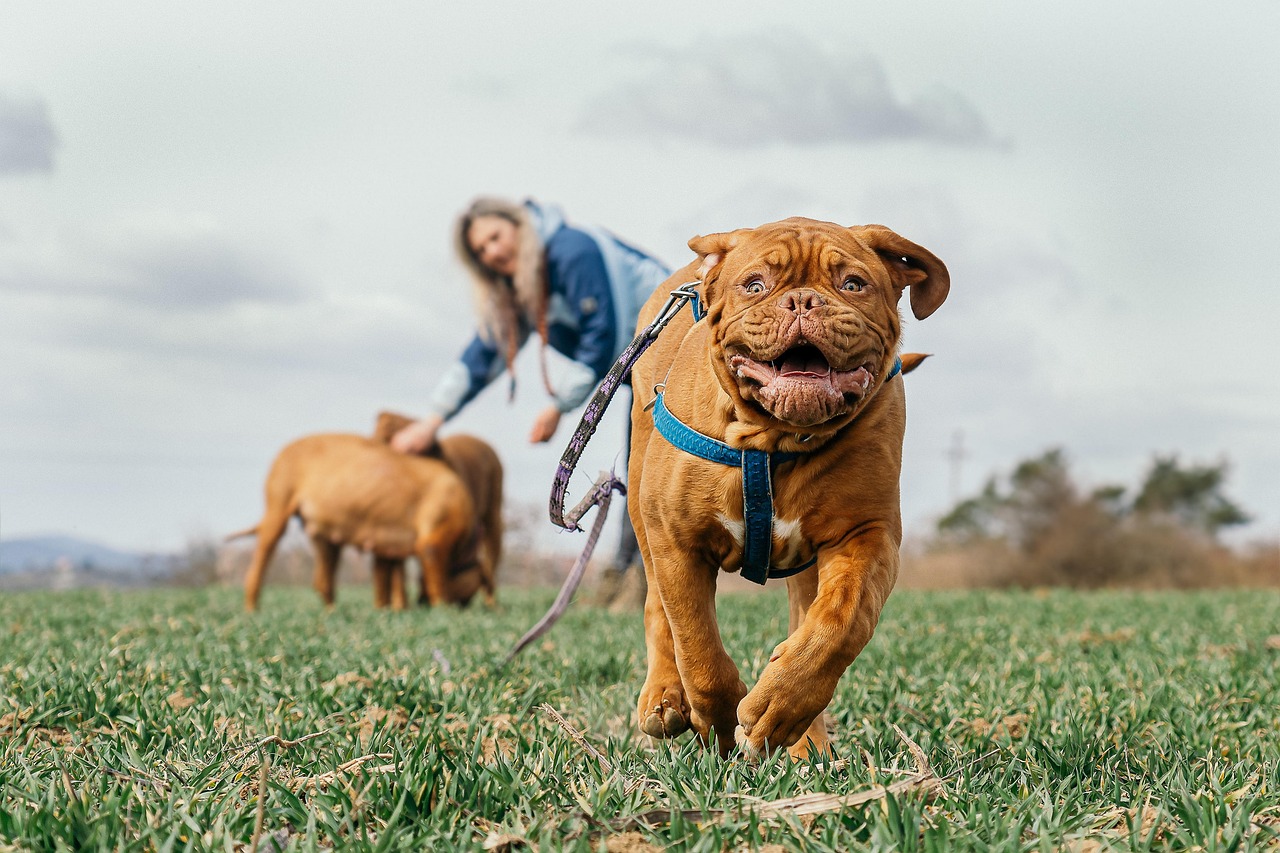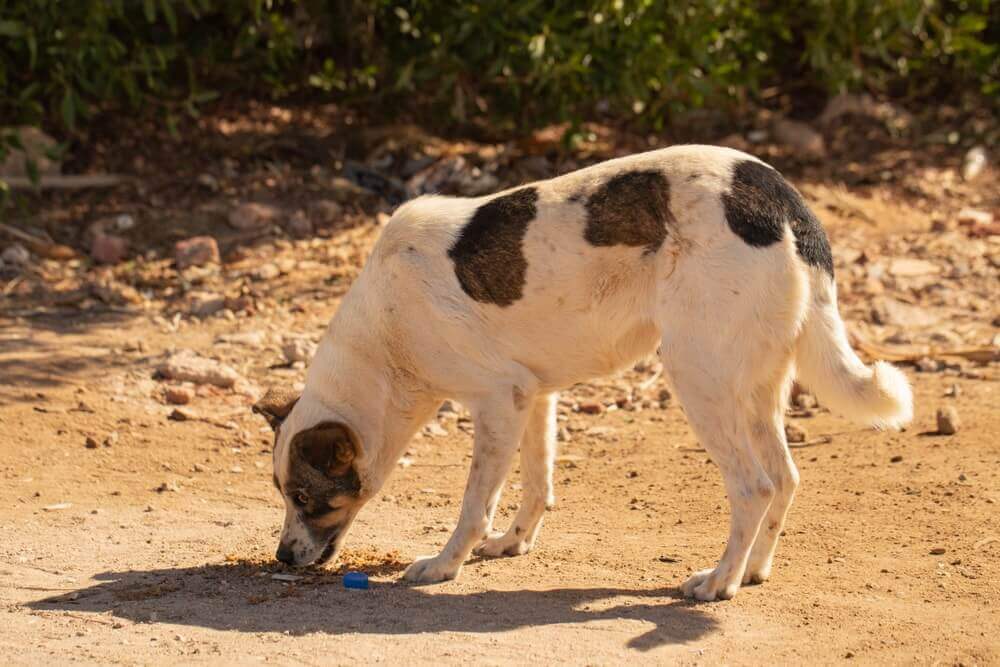Hey Ollie blog readers! We’re offering you an exclusive 60% OFF your starter box! Try now!
While cats and dogs are often portrayed as polar opposites, they can actually coexist quite peacefully in an interspecies household. We rounded up five of our best tips to help your dog and cat thrive.

1. Socialization is important
If you get your dog as a young puppy it is important for you to socialize your dog with all kinds of people, objects, and surfaces. This will help your pup be confident in any and all situations (or at least have the social and coping skills to handle new and potentially scary situations.) If you get a dog and think that at some point you’d like to have a cat, you can start introducing your puppy to cats.
One easy way to do this can be a visit to your local pet store. Many urban pet stores have store cats. These are working cats in that they serve a very important purpose, keeping mice away from the pet food and treats! Many of these cats are chosen for their dog-friendliness. If these cats are not dog friendly they are generally at least tolerant of pups. If you’re unsure, feel free to ask an employee if it is ok if your dog interacts with the cat.
2. Consider your dog’s personality and the cat’s
If you have a pup with a pretty serious prey drive, a cat might not be the best idea for your dog. The American Humane Society says “If a dog attempts to aggressively chase, pin, pick up or otherwise “manhandle” any cat, it is best to not even consider getting a cat — or at least to proceed with caution. Additionally, a dog who growls, lunges at or obsessively barks at a cat would probably do best in a cat-free environment. Likewise, a cat who growls, swats at, runs from or hides from dogs would probably prefer to not live with a dog.”
3. Start slow
When integrating a cat into your household with a dog, or vice-versa, start very slowly. It might seem counterintuitive but keep the two away from each other at first. Have a cat area and a dog area and don’t allow the two to mix and mingle. Over a few days, you can move the animals closer to each other.
You can put your dog in their crate away from the cat and let the cat explore the house a bit. You’ll continue this process until your dog and cat can see each other through a barrier like a baby gate. When you finally do allow them to meet, keep your pup leashed so you can separate them quickly if you need to. Try to keep the first meeting on neutral-ish territory. So, don’t put the cat on the dog’s bed or a favorite chair, for example, you want to set everyone up for success.
If all is going well and they enjoy spending time together, you can gradually start to increase the amount of time you allow them to spend together. This time needs to be supervised, your dog and cat are still learning how to communicate with each other.
Unlike two dogs, a dog and cat may have different communication signals. Your pup could still think the cat’s signals for “I’ve had enough” mean “I want to play” or “please chase me”. It’s your job to act as the referee and make sure both animals are happy and comfortable in each others presence.
If this is not the case, separate your animals and give them some time to decompress. You can let them spend more time together in a few hours, or even wait a day before letting them interact again, whatever you feel most comfortable with.
If your animals are having significant challenges coexisting together, call in a pro. An experienced trainer can help ensure this process goes as smoothly as possible.
4. Create separate areas
Even if your dog and cat are the best of friends, they may still need some space from each other. Make sure your dog has somewhere to go like his bed or crate and the same for you cat. Maybe keep the cat tree in the living room and the crate somewhere else so they can take breaks from each other when they want to.
If you have a roommate or significant other, you probably still need some alone time to chill – so do your pets. Make sure they have time and space for this. You can let your dog relax in his crate while your cat surveys the kingdom from the highest point of her kitty tree.
5. Keep the dog out of the cat food (and litter box)
Your dog and cat may have a few treats they can eat in common, but cat diets and dog diets are pretty different. It’s not safe for your pup to eat the cat’s food. This is because it is significantly higher in fat. In fact, if your pup does eat cat food on the regular they’re at risk of developing pancreatitis or becoming obese.
Another tempting treat for your pup might be found in the cat’s litter box. If your dog tries to go searching for buried treasure, be sure to discourage that too. You don’t want your pup to get sick from eating kitty litter or cat feces (we know, gross).
Feel free to tempt your pup with something and delicious and formulated just for them, like Ollie. Our carefully selected human-grade ingredients will satisfy even the pickiest of pups. Yes, even the ones who want to dig for a snack in the cat’s litter!
The Ollie blog is devoted to helping pet parents lead healthier lives with their pups. If you want to learn more about our fresh, human-grade food, check out MyOllie.com.
Tagged As:

The nutrition your dog needs,
the food they want.

Enjoying our articles? Subscribe our Newsletters and get new articles directly to your inbox
You might also like
23 September 2025
6 MINS READ
Back to School: Training Your Dog at Any Age
As we hit back-to-school season rolls around, it’s not just kids who benefit from sharpening their skills and learning something new—our dogs can, too! Training isn’t limited to puppies or p…
by Ollie Pets
23 September 2025
7 MINS READ
Lace Up and Leash Up: A Beginner’s Guide to Running with Your Dog
Running is one of the simplest ways to stay active, and it’s even better with a canine companion. Not only does running with your dog keep you both in great shape, it also strengthens your bond …
by Ollie Pets
18 September 2025
8 MINS READ
Why Do Dogs Eat Rocks? Common Reasons & How To Stop It
Why do dogs eat rocks and is it dangerous? Learn what causes this behavior, what to watch for, and how to stop your dog or puppy from eating rocks safely.
by Gabby Slome







